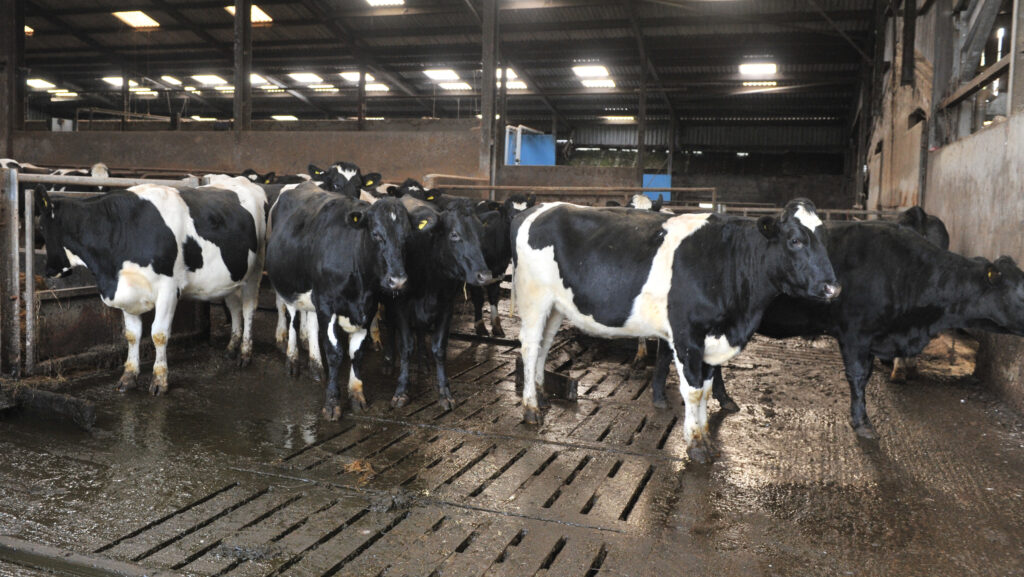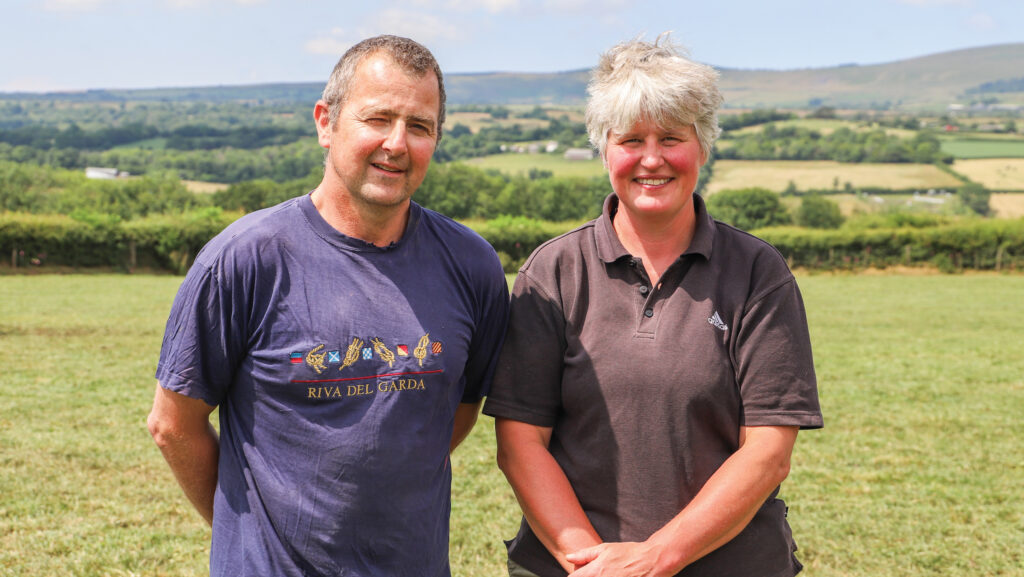How 4 once-a-day milking options affect profitability
 © Debbie James
© Debbie James Reducing milking frequency to once a day can cut the workload for dairy farmers.
However, a new report commissioned in Wales by Farming Connect has shown that for some businesses, profitability will take a hit if they switch from a twice-a-day system.
Clyngwyn, part of Farming Connect’s network of “Our Farms”, near Clynderwen, Pembrokeshire, currently has a morning and afternoon milking pattern for the spring-calving herd.
See also: A dairy farmer’s tips on switching to once-a-day milking
The mixed herd of Swedish Reds, Norwegian Reds and Montbeliards produces an annual milk yield average of just under 6,000 litres a cow at 4.5% butterfat and 3.4% protein, with milk sold to First Milk.
The system, run by Jeff and Sarah Wheeler, was reviewed as part of their Farming Connect project work by Sean Chubb, business development consultant at LIC.
The aim was to see if the economics of reducing milking frequency to once a day could stack up in a 150-cow herd, budgeting for 1.4 tonnes of concentrates a cow a year.
Sean applied the Wheelers’ figures to four models:
- Full season, once-a-day milking
- Half season, once-a-day milking
- Milking once a day for three weeks at the beginning of lactation
- Milking once a day at the beginning and end of lactation.
This exercise concluded that, at the existing stocking rate and production level, and factoring in cost of production, the Wheelers’ twice-a-day system was the most profitable at their current milk price.
“If these prices move in a favourable way, then this system will remain the most profitable, but if they go in an unfavourable way, then the other systems could become more profitable,” Sean says.
Profitability comparison
For each of the once-a-day systems Sean modelled, the level of profitability shifted.
Milking a full season once a day would result in an annual labour saving of 1,277.5 hours, but revenue would decrease by 30%, while costs would fall by only 5%.
Adopting once-a-day milking for up to half of the season (from September to the end of February) would cut yearly milking times by 630 hours. Milk revenue would drop by 10% and input costs by 2%.
If the Wheelers only scaled back to once a day for three weeks at the beginning of the lactation and for another nine weeks at the end, revenue would be cut by 7% and costs by 1%. Labour savings would total 294 hours/year.
The shortest intervention – once-a-day milking for three weeks at the beginning of the main part of the calving period, saving 73.5 hours in labour annually – would, at 1.5%, result in the smallest decrease in their revenue, with very little movement in total expenses.
But profit in this scenario would still be less when compared with twice-a-day milking, Sean calculated.

Jeff and Sarah Wheeler © Farming Connect
Positives and negatives
Each of the different applications of once-a-day milking scrutinised has its own positive and negative points, Sean says, depending on what a farmer wants to achieve – including work-life balance.
Although none of the once-a-day systems would make the Wheelers as much money as twice-daily milking, they are profitable, and would remain so, even at lower milk prices.
“As the length of once-a-day milking increases, the profitability decreases – but the profit per hours milked increases,” he explains.
“Which application of once-a-day milking is best for you comes down to what you are wanting to get out of [it].”
Workload
The Wheelers had contemplated switching to fewer milkings as a means of cutting their working hours.
“It is something that had been in the back of our minds for a while, because it is just Jeff and I and his parents on the farm,” says Sarah.
“We had asked ourselves if there was anything we could do differently to reduce the workload.”
Sean’s analysis of a range of options proved a very useful exercise to examine the financial implications of any change, and it helped to inform the decision in the short term, she adds.
“I can’t see us going completely that way – everyone tells us our cows are too good for milking just once a day, and the financial hit from doing that would be more than I would have expected.
“It’s not that we are ruling it out completely as something we might do in the future, but perhaps just in the last couple of months before drying off, because we would lose out too much from going completely once a day.”
There would be no option to increase cow numbers for that loss of production because of stocking rates under the Control of Agricultural Pollution regulations.
“We can’t keep any more cows than we have now [as] our sheds are at maximum capacity, and we don’t have the land required for the new stocking rate,” Sarah explains.
Calving block
According to the report, the greatest lever the Wheelers have for offsetting loss in milk production if they were to introduce once-a-day milking would be to tighten their calving block to 10-12 weeks.
The herd currently calves from 20 March, with a few of the later calving cows extending the block to 15 September.
But this would be influenced by what their milk buyer would permit, Sean suggests.
A tighter calving pattern would mean lower use of concentrates, electricity and building repairs, and, with consequential lower milk production at transition, less veterinary and medicine costs too.
